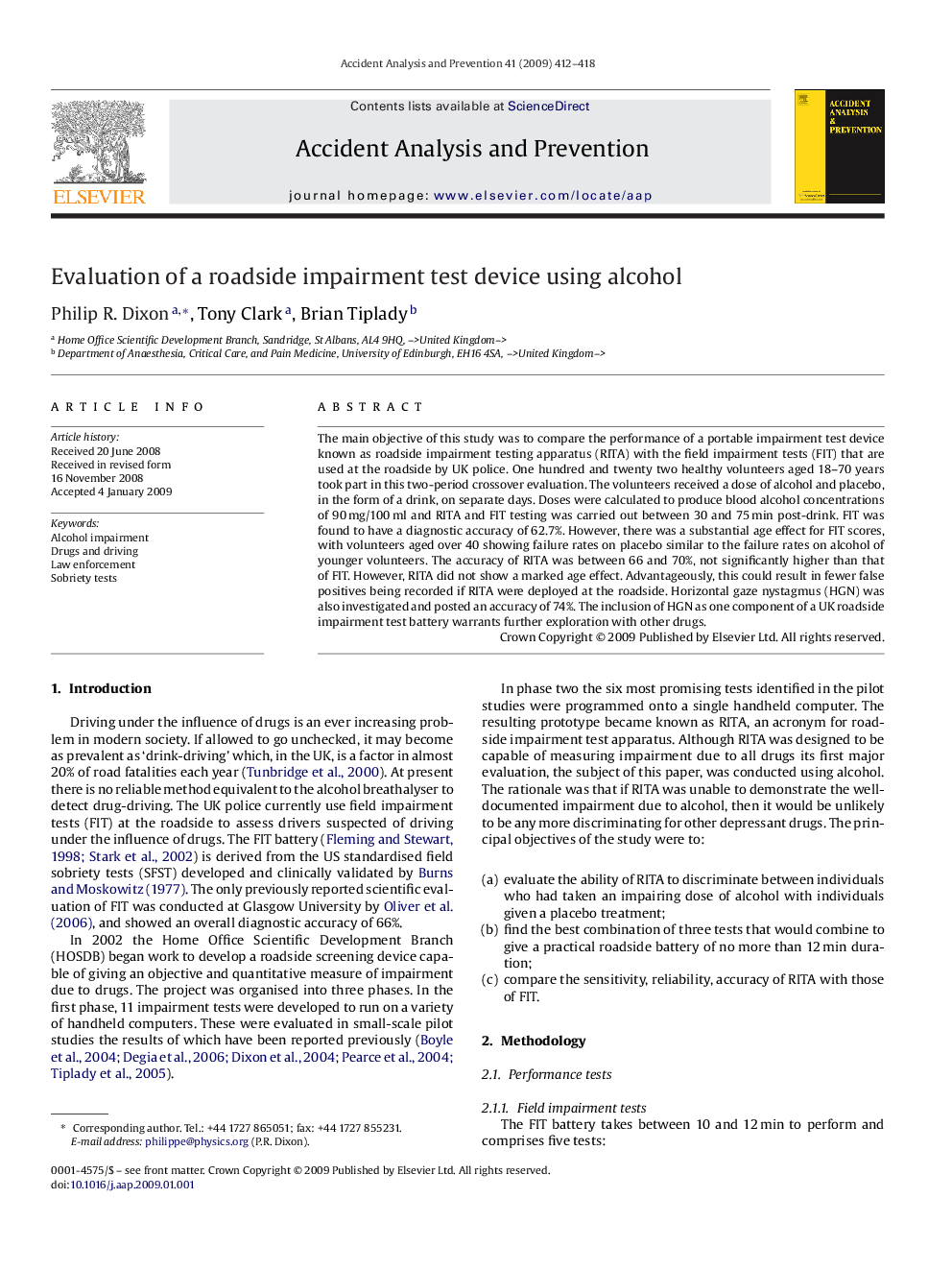| Article ID | Journal | Published Year | Pages | File Type |
|---|---|---|---|---|
| 573254 | Accident Analysis & Prevention | 2009 | 7 Pages |
The main objective of this study was to compare the performance of a portable impairment test device known as roadside impairment testing apparatus (RITA) with the field impairment tests (FIT) that are used at the roadside by UK police. One hundred and twenty two healthy volunteers aged 18–70 years took part in this two-period crossover evaluation. The volunteers received a dose of alcohol and placebo, in the form of a drink, on separate days. Doses were calculated to produce blood alcohol concentrations of 90 mg/100 ml and RITA and FIT testing was carried out between 30 and 75 min post-drink. FIT was found to have a diagnostic accuracy of 62.7%. However, there was a substantial age effect for FIT scores, with volunteers aged over 40 showing failure rates on placebo similar to the failure rates on alcohol of younger volunteers. The accuracy of RITA was between 66 and 70%, not significantly higher than that of FIT. However, RITA did not show a marked age effect. Advantageously, this could result in fewer false positives being recorded if RITA were deployed at the roadside. Horizontal gaze nystagmus (HGN) was also investigated and posted an accuracy of 74%. The inclusion of HGN as one component of a UK roadside impairment test battery warrants further exploration with other drugs.
